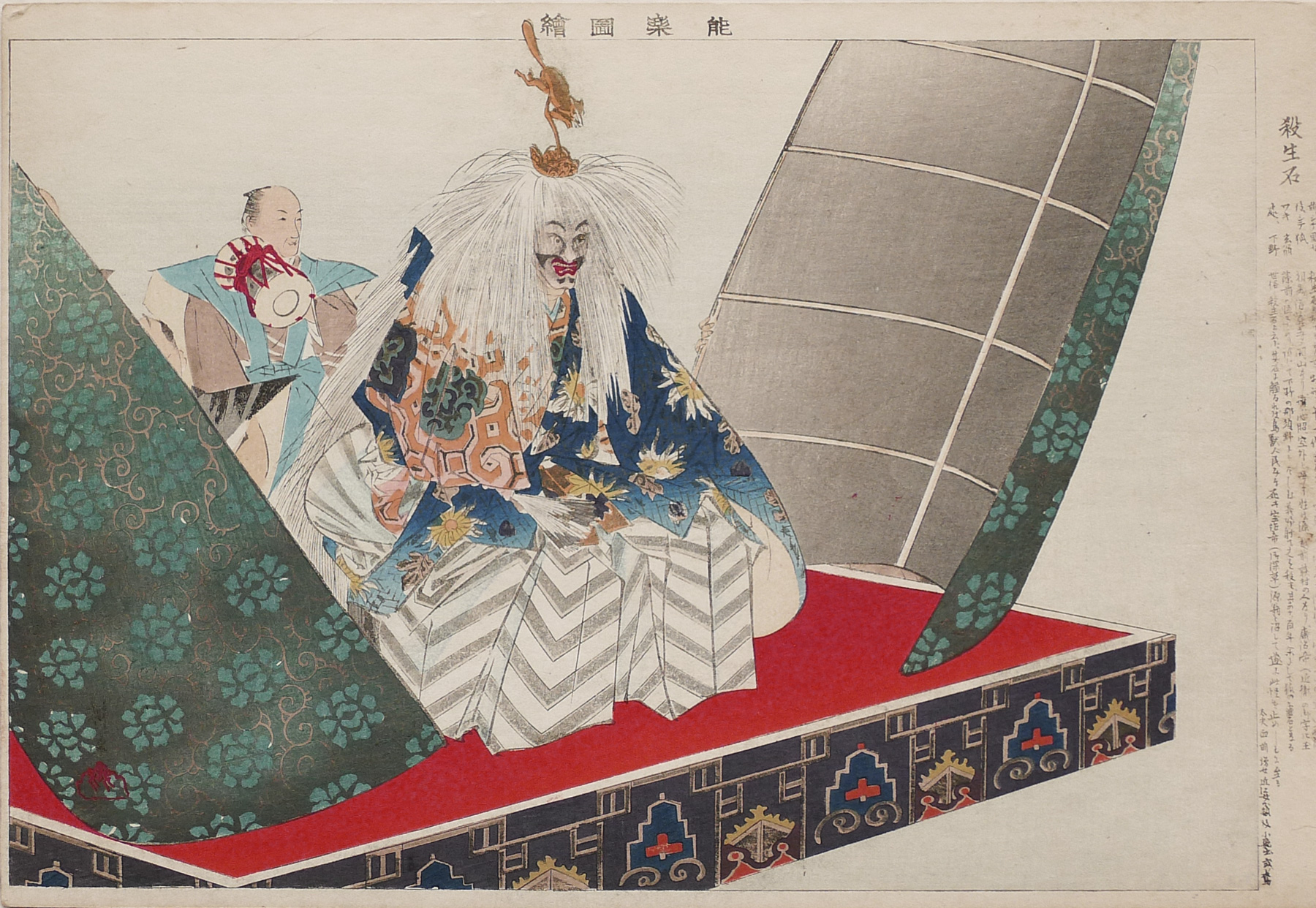Taken from
DIALOG WITH A GHOST:
MODERN NŌ PLAYS BY MISHIMA YUKIO
ON THE STAGES OF THE POLISH THEATRE
by Beata Kubiak Ho-Chi
(appearing in Analecta Nipponica: Journal of Polish Association for Japanese Studies, Number 4/2014, Polish Association for Japanese Studies)
Fully formed at the turn of the 14th and 15th century, the Nō theatre constitutes one of the oldest Japanese theatre forms. Its great creators and codifiers were a father and a son: Kan’ami 観阿弥 (1333–1384) and Zeami 世阿弥 (1363–1443). The Nō convention was settled by the 18th century, including fixed, symbolic gestures and figures (kata 型). Nō is not a dramatic theatre in the Western meaning of the word. It can rather be defined as a poetic performance, where, apart from the actors (always men, regardless of the character performed), an important role was held by the orchestra (hayashi 囃子) and a choir composed of several people (jiutai 地謡). The actors appearing on the stage (shite シテ – the performing actor, wearing a mask, and waki ワキ – the secondary actor) narrate a story rather than play roles, and the text they melodiously recite is called yōkyoku 謡曲 (a song, a melody), which indicates its direct connection with music. The stage movement, where a significant role is held by dance (mai 舞) and kata, is performed with the accompaniment of drums, the flute and the choir. The contents of around two hundred and forty known Nō plays (of which around a hundred are staged nowadays) are composed of legends, folk tales, themes taken from classical literature and Buddhist stories. This theatre, formed in the times of long-lasting civil wars caused by a fierce struggle for power, and very popular at that time especially among the samurai aristocracy, is steeped in an atmosphere of suffering and sorrow. It is associated with Buddhist meditation on transience and the impermanence of everything in this world (the so called mujō 無常). In the Nō theatre, this world and the beyond coexist in a time that has nothing to do with the linear one. Usually on the stage, the ghost of a dead warrior or that of a high born woman appears, who, in the presence of a Buddhist monk, a pilgrim or an ascetic, narrates about some tragic moments from his/her life and relives unspeakable suffering. Symbolism, understatement, suggestion as well as sublimity and elegance are the values considered to be the most characteristic of the Nō theatre. They co‑create the complex aesthetic category of yūgen (profound and mysterious beauty), finding its fullest expression precisely in theatre.
